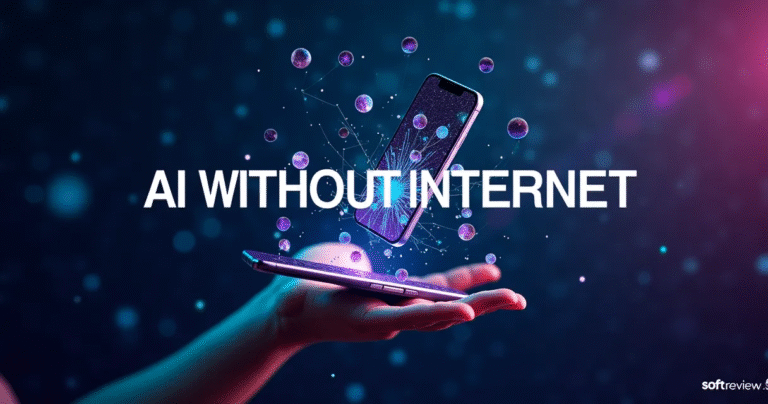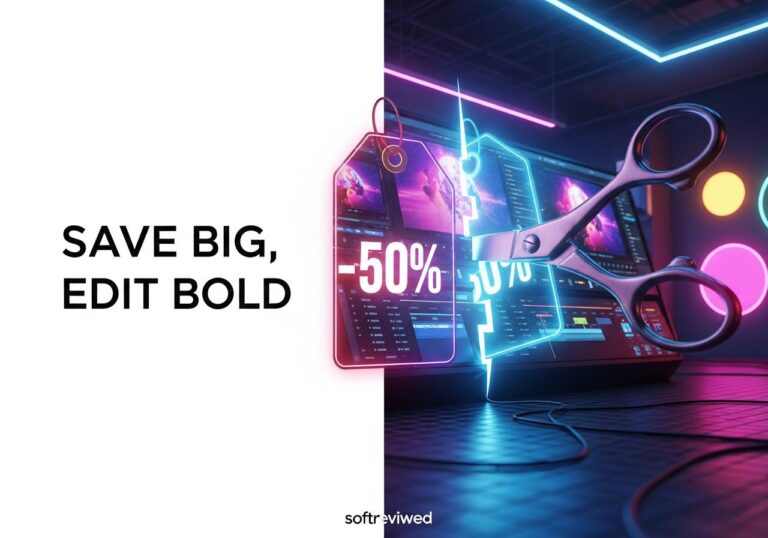📱 On-Device AI: The Future of Mobile Intelligence
Run powerful AI models directly on your device without an internet connection – privacy, performance, and flexibility in your pocket.
🔌 No Internet Needed
Run sophisticated AI models completely offline on your device using your phone’s hardware – perfect for areas with limited connectivity or when you want to work without interruptions.
🔒 Offline Privacy
All your data stays local – no cloud uploads for images, text, or code inputs. Process sensitive information with confidence knowing it never leaves your device.
🧠 Multi-Task AI
Handle diverse AI tasks including image Q&A, text summarization, code generation, and engage in multi-turn conversations – all from a single on-device model.
⚡ Hardware-Optimized
Performance varies based on your device specifications, with modern chips delivering the best experience. The system automatically optimizes for your specific hardware configuration.
👨💻 Developer Focus
An open-source project under Apache 2.0 license actively seeking community feedback. Import your own custom models and contribute to this evolving technology.
🔍 Experimental Model Hub
Access Google’s Gemma series, Qwen models, and compatible Hugging Face models through the experimental hub. Choose the right model for your specific use case and device capabilities.
Imagine your smartphone wielding the power of sophisticated Artificial Intelligence, even when you’re completely off the grid. No Wi-Fi? No cellular data? No problem! This isn’t a far-off dream; it’s a reality you can explore today with Google’s AI Edge Gallery app. This innovative application lets you run powerful local AI models directly on your mobile device, showcasing the incredible potential of on-device AI that works entirely offline. Forget the cloud for a moment; the AI revolution is coming directly to your pocket.
What Exactly is the AI Edge Gallery App? 🤔
So, what is this AI Edge Gallery app everyone’s talking about? In simple terms, it’s an experimental application developed by Google designed to demonstrate and allow users to experience cutting-edge generative AI models running entirely on their Android devices (with an iOS version on the horizon).
An Experimental Playground by Google
Google has made the AI Edge Gallery app available as an open-source project on GitHub. This “experimental” tag is important – it signifies that this is a space for exploration, for developers, tech enthusiasts, and curious users to get a hands-on feel for the capabilities of on-device AI. It’s a window into what’s becoming possible as AI models get smaller and more efficient.
The Core Mission: Showcasing On-Device Generative AI
The primary goal of the AI Edge Gallery app is to showcase the practical applications and performance of generative AI models, like Google’s own Gemma series or Alibaba’s Qwen, when they operate locally on a smartphone. It’s about proving that you don’t always need a beefy server or a constant internet connection to tap into advanced AI functionalities. As Google themselves state on their GitHub page, the app allows users to “Explore, Experience, and Evaluate the Future of On-Device Generative AI with Google AI Edge.” You can find the app and more details on the official Google AI Edge Gallery GitHub repository.
Unboxing the Magic: How AI Edge Gallery Delivers Offline AI 🪄
The ability to run complex AI models on a mobile device without an internet connection might sound like magic, but it’s the result of significant technological advancements.
Models on Your Device, Not in the Cloud
The fundamental shift with the AI Edge Gallery app is that the AI models themselves are downloaded and stored directly on your smartphone. When you interact with the AI – ask it a question, give it a prompt – all the processing happens locally. Your data doesn’t travel to an external server, which is a huge win for privacy and speed.
Key Technologies Powering the Experience (LiteRT, LLM Inference API)
Several key Google technologies make this possible:
- Google AI Edge: This encompasses a suite of tools and APIs designed for on-device machine learning.
- LiteRT: A lightweight runtime optimized for executing AI models efficiently on resource-constrained devices like mobile phones.
- LLM Inference API: This specific API is crucial for running Large Language Models (LLMs) on-device. The AI Edge Gallery app serves as a practical demonstration of this API in action.
- Hugging Face Integration: The app integrates with Hugging Face, a popular platform for AI models, allowing users to discover and download various optimized models.
These components work together to ensure that models like Gemma can perform tasks such as text generation, summarization, and image understanding directly on your Android device.
Getting Started: Downloading and Setting Up
Currently, the AI Edge Gallery app is available as an APK (Android Package Kit) from its GitHub releases page. Users download this file and install it on their Android device. Once installed, you can browse available AI models (often hosted on Hugging Face, requiring an account and agreement to terms for model downloads) and download them to your device for offline use. The app itself guides you through this process.
Your AI Toolkit Inside the Gallery: Features to Explore 🛠️
The AI Edge Gallery app isn’t just a static demo; it’s an interactive playground packed with features that let you experience mobile AI firsthand.
💬 AI Chat: Your On-Device Conversationalist
Engage in multi-turn conversations with an AI chatbot. Ask questions, brainstorm ideas, or just chat – all processed locally. This is where you can really feel the responsiveness of an offline AI.
🖼️ Ask Image: Understanding Visuals Locally
This feature allows you to upload an image from your device and ask the AI questions about it. Get descriptions, identify objects, or even ask it to solve problems based on the image content, without your picture ever leaving your phone.
✍️ Prompt Lab: One-Shot Text Generation Offline
Experiment with single-turn prompts. You can ask the AI to summarize text, rewrite content in different tones, generate code snippets, or explore other creative text generation tasks.
🤖 Choose Your Model: Experiment with Gemma, Qwen, and More
The gallery allows you to select from various available local AI models. This includes different sizes of Google’s Gemma (like Gemma 3N variants mentioned in some reports), Alibaba’s Qwen 2.5, and potentially others as the platform evolves. Models can range from around 500MB for lighter tasks to several gigabytes for more comprehensive capabilities. You can even “bring your own model” if it’s in the LiteRT .task format.
📊 Performance Insights: See How It Ticks
For the technically curious, the app provides real-time benchmarks. You can see metrics like Time To First Token (TTFT) and decoding speed, giving you a transparent look at how the local AI model is performing on your specific hardware.
Real-World Use Cases: What Can You Do with the AI Edge Gallery App? 💡

While experimental, the features within the AI Edge Gallery app point towards tangible real-world applications for offline AI on your mobile:
Instant Answers and Brainstorming, Anywhere
Stuck on a question while hiking with no signal? Need to brainstorm ideas during a flight? The AI Chat feature can provide information or creative sparks without needing an internet connection.
Image Analysis on the Fly
Imagine identifying a plant or an object using your phone’s camera and an AI model, even in a remote location. The “Ask Image” feature demonstrates this potential for instant, private visual analysis.
Creative Writing and Summarization Without the Web
Draft emails, write poetry, or summarize long articles stored on your device using the Prompt Lab, all while keeping your content private and accessible offline. This is particularly useful for focused work without online distractions.
The Perks and Practicalities of Using AI Edge Gallery
Running AI locally via an app like AI Edge Gallery offers compelling advantages, but it’s also important to understand its current context as an experimental tool.
Why Go Local? The Big Wins for Users
- 🔒 Unrivaled Data Privacy: Since all processing happens on your device, your personal data, prompts, and images are not sent to external servers. This is a massive plus for privacy-conscious users.
- ⚡ Zero-Latency Responses: Interactions with the AI are incredibly fast. There’s no network delay, making the experience feel much more fluid and responsive compared to many cloud-based AIs.
- ✈️ True Offline Functionality: This is the standout feature. Use powerful AI tools regardless of your internet connectivity – on a plane, in the subway, or in areas with poor service.
- 💸 Potential Data Cost Savings: By processing data locally, you avoid using mobile data for AI tasks, which can be beneficial for users with limited data plans.
Things to Keep in Mind: Current Realities
- 🧪 It’s Experimental: The AI Edge Gallery app is an Alpha release. This means it’s still under development, and you might encounter bugs or limitations. Features and performance will likely evolve.
- 📱 Device Requirements: Running these AI models efficiently requires reasonably modern smartphone hardware. Google typically suggests devices with Android 10+ and at least 6GB of RAM, along with capable chipsets. Performance will vary across different phones.
- 🔋 Resource Usage: AI processing can be demanding on your phone’s battery and processing resources. While models are optimized, intensive use might still impact battery life more than typical apps.
Expert Takes: The Significance of On-Device AI Showcases Like AI Edge Gallery 🗣️
The launch of tools like the AI Edge Gallery app is seen by many in the tech community as a significant step. While direct commentary on this very new app is still emerging, the broader implications of on-device AI are widely discussed.
Developers and AI researchers often highlight the “democratization” aspect – making powerful AI tools more accessible and usable in diverse contexts, especially where connectivity is a challenge. The privacy benefits are also a recurring theme. For instance, a Google blog post discussing the LLM Inference API (which powers the gallery) mentions its role in enabling “developers to build groundbreaking on-device Gen AI applications while ensuring user data stays private.”
The AI Edge Gallery app serves as tangible proof of this direction, allowing not just developers but also everyday users to see and feel the difference that local AI can make.
Peeking at What’s Next: The Future of the AI Edge Gallery and Local Mobile AI 🚀
The AI Edge Gallery app is a stepping stone. Its existence and open-source nature suggest a vibrant future for mobile AI that operates locally.
More Models, More Features
We can anticipate a growing selection of AI models becoming available through the gallery and similar platforms. This could include models specialized for different tasks, languages, or even more advanced multimodal capabilities. The app itself will likely see feature enhancements based on user feedback and ongoing development in the Google AI Edge ecosystem.
Broader Device Compatibility (Hello, iOS!)
Google has already indicated that an iOS version of the AI Edge Gallery app is planned. This will bring the experience of on-device AI to a wider audience and further encourage development in this space.
Paving the Way for a New Class of Apps
Perhaps the most exciting long-term impact is that the AI Edge Gallery app and the underlying technologies like the LLM Inference API will inspire developers to create entirely new kinds of applications. Imagine privacy-first personal assistants, ultra-responsive creative tools, and accessibility apps that work flawlessly offline, all powered by local AI models.
Is the AI Edge Gallery a Glimpse into the Future of Everyday AI? 📲
The AI Edge Gallery app is more than just a cool tech demo; it’s a tangible preview of how our relationship with AI is set to evolve. By bringing powerful AI capabilities directly onto our mobile devices and freeing them from the shackles of constant internet connectivity, Google is pointing towards a future where AI is more personal, private, and pervasively helpful.
This shift empowers users with greater control over their data and provides a seamless AI experience regardless of location or network status. While the journey of on-device AI is still in its early stages, the AI Edge Gallery app offers an exciting and accessible way to experience its burgeoning potential. Your smartphone is about to get a lot smarter, and you won’t even need to be online to witness it.







